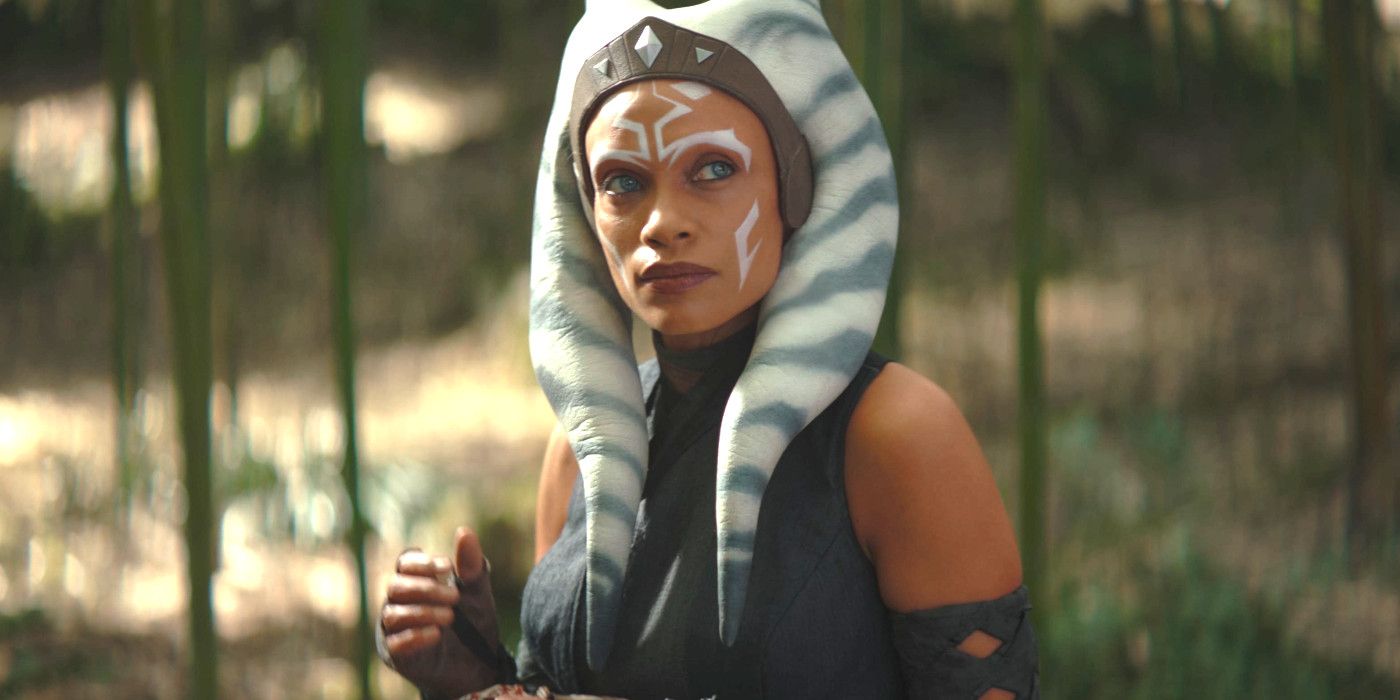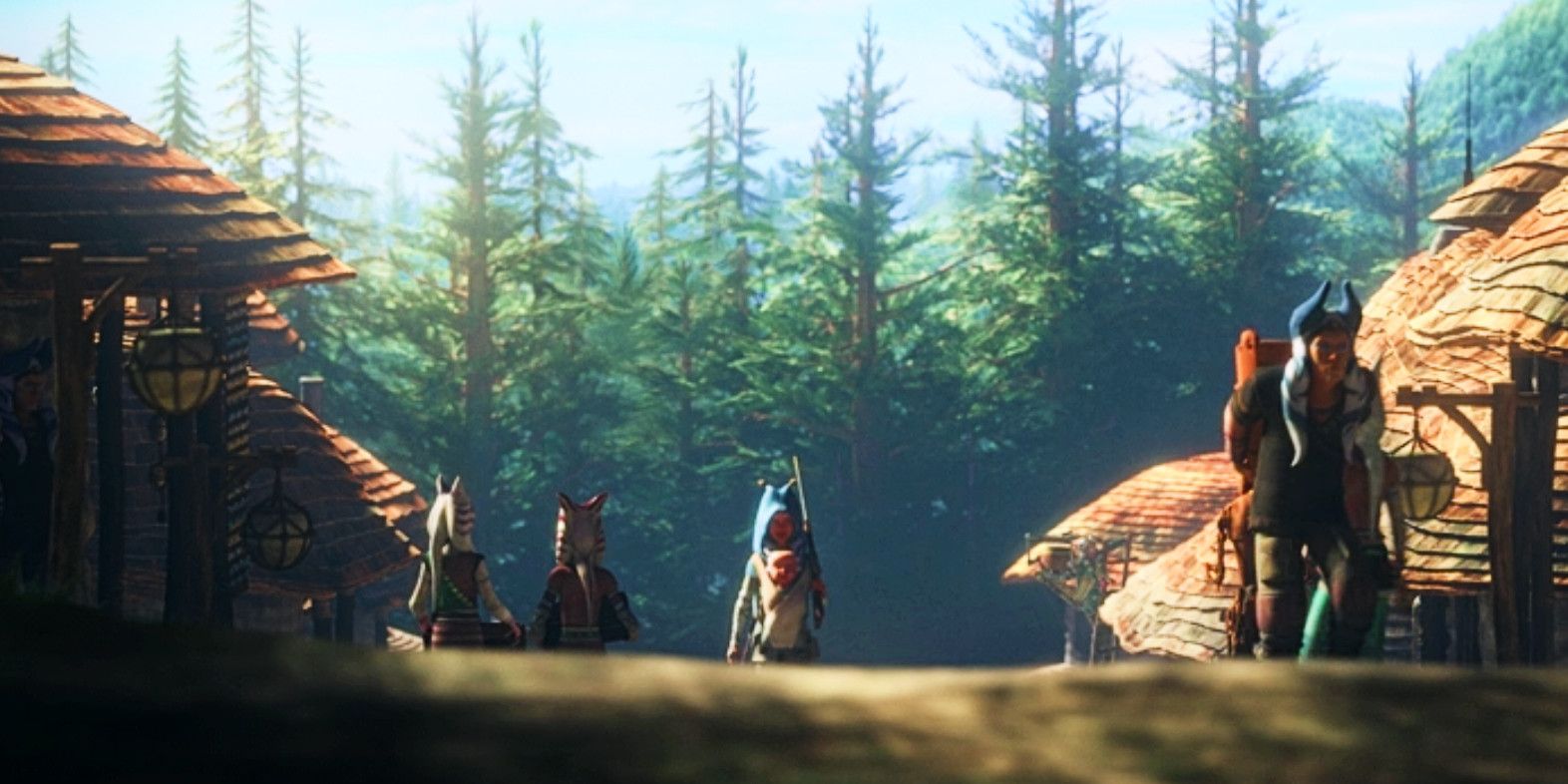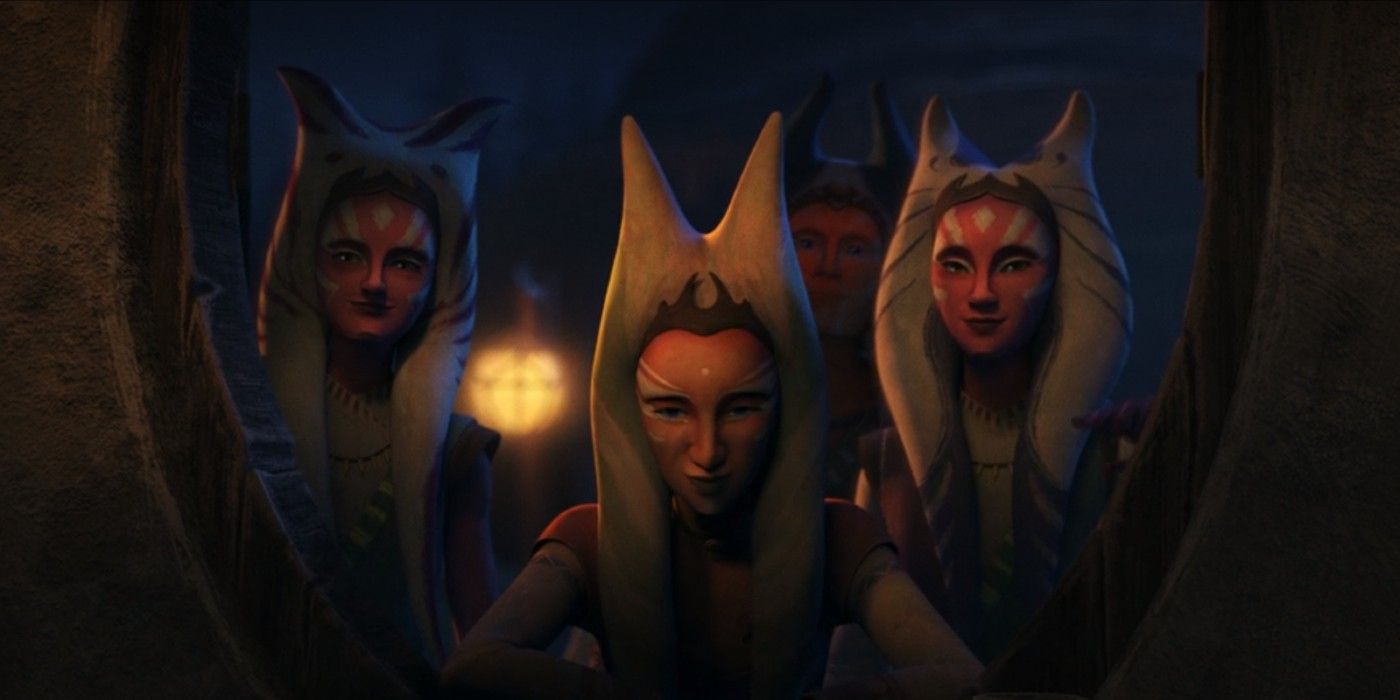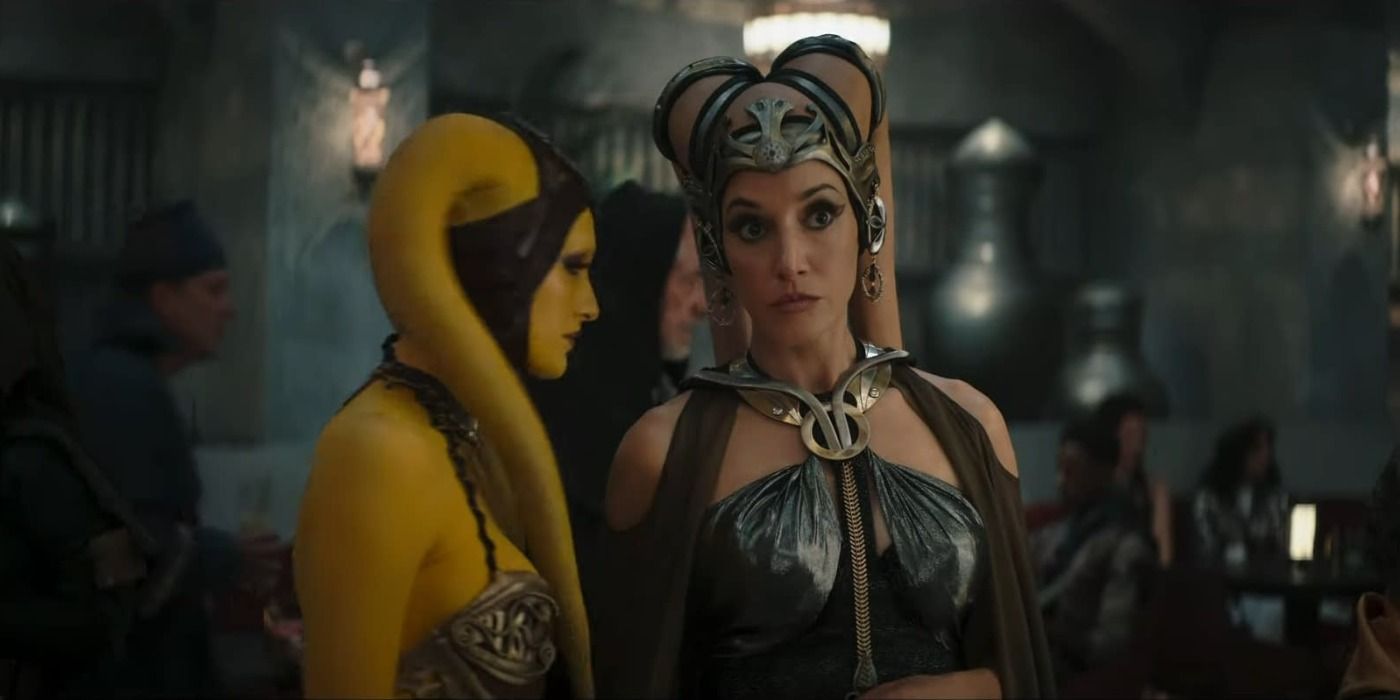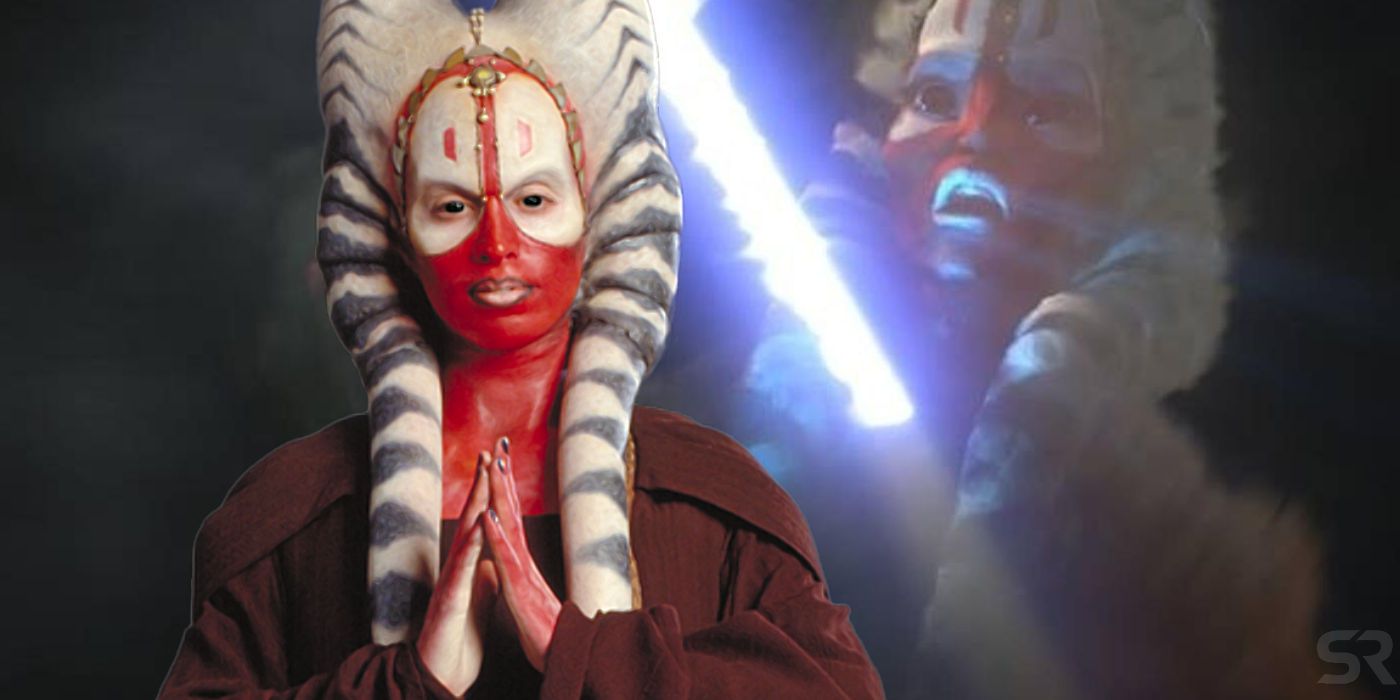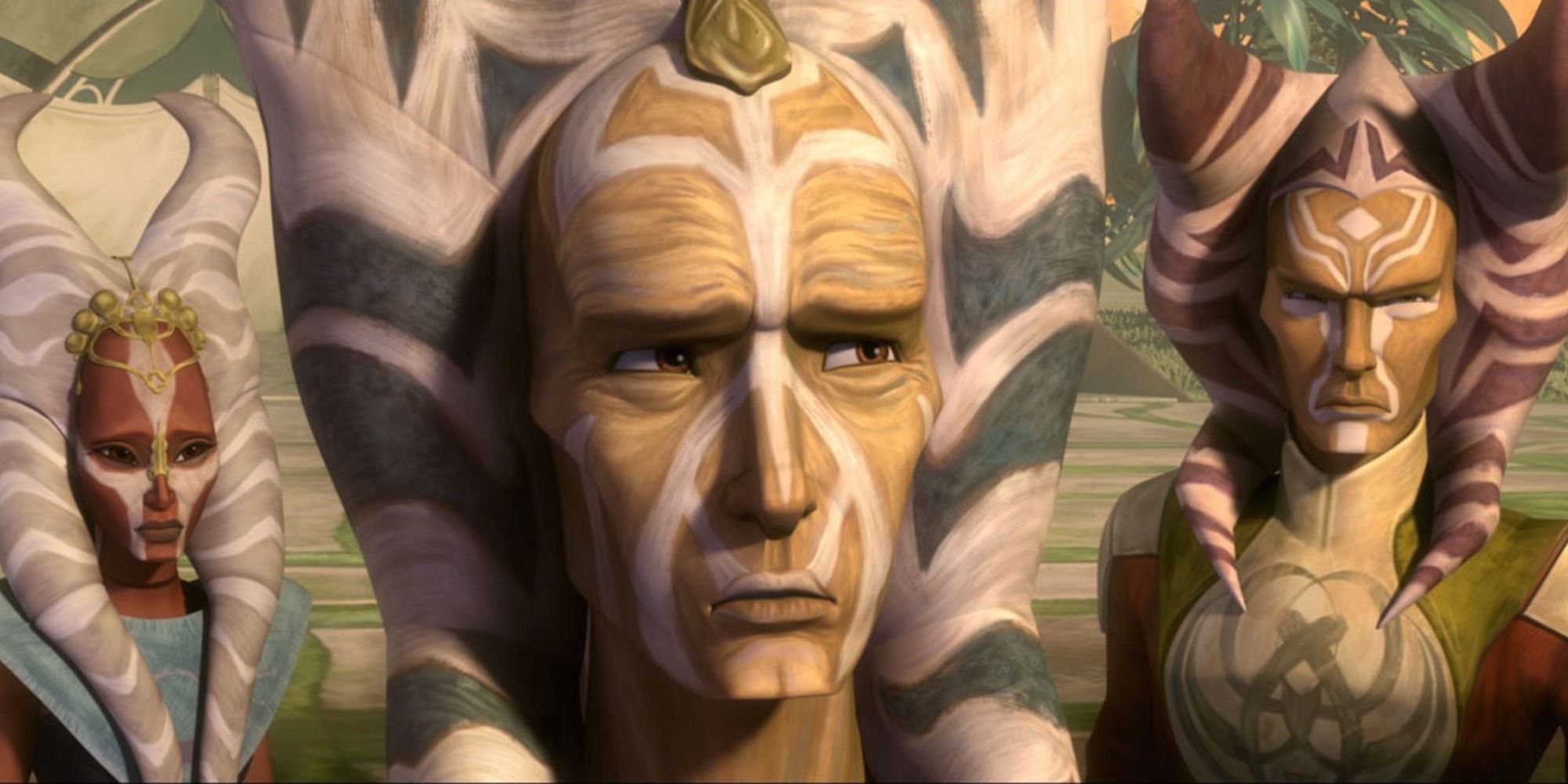Summary
- The Togruta, Ahsoka Tano's species, come from the planet Shili in the Expansion Region of the Star Wars galaxy, known for its beautiful landscapes.
- Togrutas have unique features, such as their montrals (hollow horns used for echolocation) and lekku (head tails), which can have various colors and grow with age.
- Togrutas are often confused with Twi'leks, but they have distinct differences, including the number of lekku and their primary biological functions. Other Togruta Jedi and important Togruta characters also exist in the Star Wars universe.
Ahsoka Tano has become one of Star Wars’ most prolific characters, though there is still much that is unknown about her species, the Togruta. The Star Wars galaxy is rife with interesting alien species – there are the Wookiees, Twi’leks, Gungans, Toydarians, Ewoks, and thousands more. But Ahsoka Tano’s popularity has undoubtedly brought the Togruta to the forefront of Star Wars storytelling, in part because her race is so rarely seen. As Ahsoka herself put it in E.K. Johnston’s Ahsoka novel, “There aren't so many Togruta at large in the galaxy that I fit into a crowd.”
Over the years, Star Wars has incorporated more of the Togruta’s history and culture into its stories, including an episode of Star Wars: Tales of the Jedi that focused on Ahsoka’s early life before being found by the Jedi Order, and an arc in Star Wars: The Clone Wars season 4 that saw a Togruta colony being overrun by Zygerrian slavers. For those who want to know more about the Togruta as a species, those animated Star Wars episodes are a great place to start, but there is always more to learn.
The Togruta Come From The Galaxy's Expansion Region
The Togruta originally hail from a planet called Shili, a grassy, wooded planet found in the Expansion Region. Ahsoka was born in a small village on the Togruta homeworld, surrounded by mountains, gorgeous flora, and plenty of wildlife. The Expansion Region in the Star Wars galaxy is situated between the Inner Rim, famous for key worlds such as Onderon and Jakku, and the Mid Rim, known for planets like Naboo and Kashyyyk. The region was site of many conflicts during the Clone Wars, including the infamous Umbara Campaign.
Though Shili is the Togruta’s homeworld, there is also a Togruta colony located on the planet Kiros. Kiros, like Shili, is situated in the Expansion Region and was home to some 50,000 Togrutas during the time of the Clone Wars. Where Shili is filled with woods and mountains, Kiros is rife with mountains and valleys, rivers, and waterfalls. The architecture on Kiros, as seen in The Clone Wars season 4, reflects the shape of the Togruta’s montrals, creating fascinating, yet imposing buildings. Ahsoka’s hometown on Shili, however, featured smaller houses seemingly made with clay, protected by roofs made of wooden shingles, which blend into their surroundings.
Togruta Biology Explained - Their Hair, Lekku, & Montrals
The Togruta’s most distinctive feature is undoubtedly their horns. These cone-shaped horns are called montrals; though they are only mere stumps when Togruta children are born, they grow as the Togrutas get older, towering high above their heads. Interestingly, the montrals are hollow inside and are used to sense the movement of objects around them through echolocation. Togruta montrals and head tails are always striped, but while the most prominent Togrutas in Star Wars have white and blue striped montrals, much like Ahsoka, there are plenty of color combinations possible.
The Togruta’s head tails, better known as lekku, grow from their montrals at a similar rate. The Togruta all have three lekku: two to the front, falling over their chest, and one to the back, growing from the base of the skull. The lekku can reach down to their waist once they’ve fully matured, but male Togruta lekku are predominantly shorter than those of the females. Ahsoka's lekku have become viewed as one of her most celebrated features, and an enormous amount of effort has been taken recreated them in live-action.
As the Togruta have montrals and lekku as opposed to hair, Togruta Jedi are unable to sport a traditional Padawan braid. Instead, as Ahsoka demonstrated in Star Wars: The Clone Wars, species like the Togruta and the Twi’leks wore “braids” made out of silka beads. These braids are essentially decorative beaded chains that certain alien species who are training to be Jedi can wear to signify their status as Padawans.
The Togruta’s skin tone can be just as diverse as the color of their montrals and lekku. While Ahsoka’s skin tone is orange-tinted, there are also canon Togrutas with white, blue, yellow, brown, and purple tones. The distinct facial markings of the Togruta also change with age – for instance, when Ahsoka is born, she has four white dots on her face, which at some point morphed into her unique pattern.
Togruta Are Often Confused With Twi'leks - Here's How They're Different
Just as Togrutas are well known for their lekku, so are the Twi’leks, but they are distinctly different species. Where Togrutas have three lekku, the Twi’leks usually sport two or, in some very rare cases, four. Unlike the Togrutas, whose montrals have the primary biological function, the Twi’leks use their lekku for multiple purposes: some extra sensitive lekku can be used to pick up objects and are reactive to touch, and the Twi’leks use their lekku as part of their own form of sign language, as well. The Twi’leks are more humanoid than the average Togruta (especially where the face is concerned), and they can have a variety of different skin tones, including blue, yellow, green, purple, orange, teal, and more.
Unlike Togrutas, the Twi’leks are considered one of the most common species in the galaxy, and they come from a vastly different region. Instead of hailing from the Expanded Regions, the Twi’leks come from the planet Ryloth, a desert-like world that is situated in the Outer Rim, close to Tatooine. Notable Twi’leks include Hera Syndulla, a Rebel general and pilot, Bib Fortuna, Jabba the Hutt’s majordomo, the prequels-era Jedi Aayla Secura, and the High Republic Era Jedi Loden Greatstorm.
Ahsoka Isn't The Only Togruta Jedi
Though Ahsoka is the most popular and well-known Togruta Jedi, she isn’t the only known one. Shaak Ti, a female Togruta first introduced on screen in Star Wars: Episode II – Attack of the Clones, was a patient and compassionate Jedi Master and member of the Jedi Council. During the Clone Wars, she supervised the training of clone cadets on Kamino. Shaak Ti has tragically died multiple times, though she ultimately and canonically met her fate at the hands of the newly named Darth Vader during Order 66 at the Jedi Temple, as seen in Yoda's Force vision on Dagobah.
At the tail end of the Clone Wars, a female Togruta named Ashla was training as a youngling at the Jedi Temple. In the High Republic Era, Jedi Master Jora Malli was a commander at the space station Starlight Beacon and also sat on the Jedi High Council. There were plenty of Togruta Jedi present during the Old Republic (though the canon status of this era is still debatable), including characters like Raana Tey and Ashara Zavros.
Other Important Togruta In Star Wars
There are other important Togruta in Star Wars’ story that aren’t Jedi, too. Notable Togruta characters include Governor Roshti, who led the Togruta colony on Kiros during the Clone Wars. In the High Republic Era, Elarec Yovet was a Queen of the Togruta who served as a Regasa (the sovereign of the Togruta government) for Shili. In 40 BBY, the Togruta Kirames Kaj was the Supreme Chancellor of the Galactic Republic, and in the months after the Battle of Endor, the Auxi Kray Korbin served as an adviser to Mon Mothma. Though the Togruta may not be as widespread in Star Wars as humans and Twi’leks, they’ve certainly still had an impact on the galaxy’s history and the Jedi Order.

